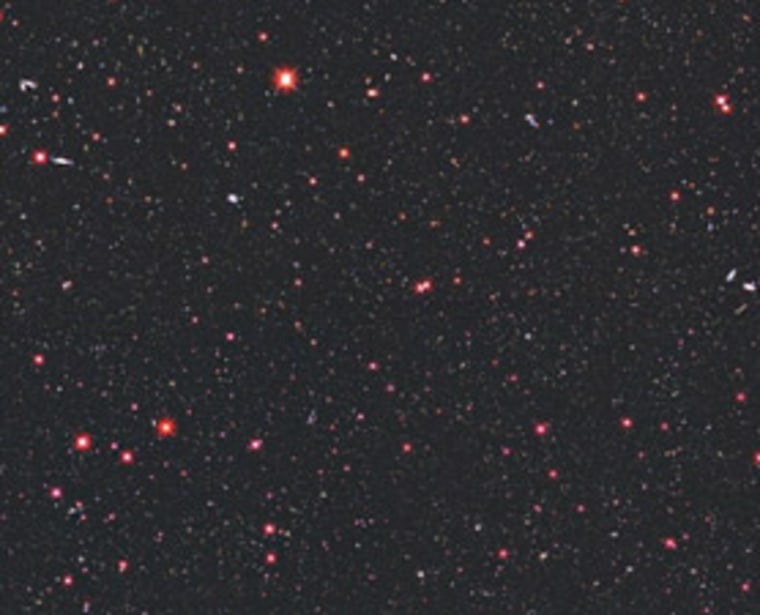A massive survey of distant galaxies should help unravel a mind-bending cosmic mystery: Why has the expansion of the universe sped up?
The goal of the new project, called BigBOSS, is to develop a cosmic yardstick to accurately measure the universe's expansion, which seems to be getting a boost from an anti-gravity force known as dark energy.
"It is a complete mystery what is going on with dark energy. It was completely unexpected," physicist Michael Levi of Lawrence Berkeley National Laboratory told Discovery News.
Dark energy, which was discovered in 1998, is not directly detectable, but scientists can track its footsteps through history. It is believed to have sprung into action about 8 billion years after the universe's creation, when the cosmos reversed course and started accelerating.
"Either (Einstein's) general relativity is wrong or the universe is filled with this weird, repulsive stuff," Levi said. "Seventy-four percent of the universe is this dark energy. Has it always been this way? What is the fate of our universe? We're trying to get a deep, theoretical understanding of what is going on. That's the fun part of it: We don't know what's going on."
BigBoss ultimately is about crunching numbers, but it needs data on tens of millions of galaxies to be successful. That's a huge increase over what is available in current sky maps and about 10 times more data than what is being collected through the Sloan Digital Sky Survey.
"To date, we've mapped less than 1 percent of the universe. The problem is going deep enough," said lead scientist David Schlegel, a cosmologist at Lawrence Berkeley
National Laboratory.
"Hubble could do this project, but it would take 100,000 to 200,000 years. Hubble is like looking through a soda straw that's eight feet long," Schlegel told Discovery News.
BigBOSS should get the job done in five years.
Key to the project's success is an innovative piece of technology that will allow astronomers to simultaneously measure 5,000 distant targets every 15 minutes. The light-splitting spectrographs will be paired with a novel device that expands the viewing port of the 158-inch Mayall Telescope at Kitt Peak National Observatory in Arizona to three degrees of the sky at one time. That's about 40 times larger than the full moon.
BOSS — a precursor program currently under way as part of the Sloan Digital Sky Survey — and BigBOSS are acronyms for Baryon Oscillation Spectroscopic Survey, a technique for detecting the remnant imprints of pressure waves that ebbed through the plasma of the early hot universe.
By measuring the relative positions of galaxies to one another, scientists expect to learn when and how powerfully the hands of dark energy stretched the fabric of space and time.
Data will be accumulated for several years, then run through a computer to look for correlations in the galaxies' angles and distances. The project, which replaces the canceled Joint Dark Energy Mission proposed by NASA and the Department of Energy, taps expertise in China, France, United Kingdom, Spain, Korea and more than a dozen research institutes in the United States.
The project recently was awarded 500 nights of observing time on the National Optical Astronomy Observatory's Mayall Telescope. Technical reviews are under way. Project managers then plan to raise the $40 million to $50 million to build the instruments, with the hope of beginning the celestial mega-census within five or six years.
An earlier version of this report listed an incorrect location for the Kitt Peak National Observatory.
